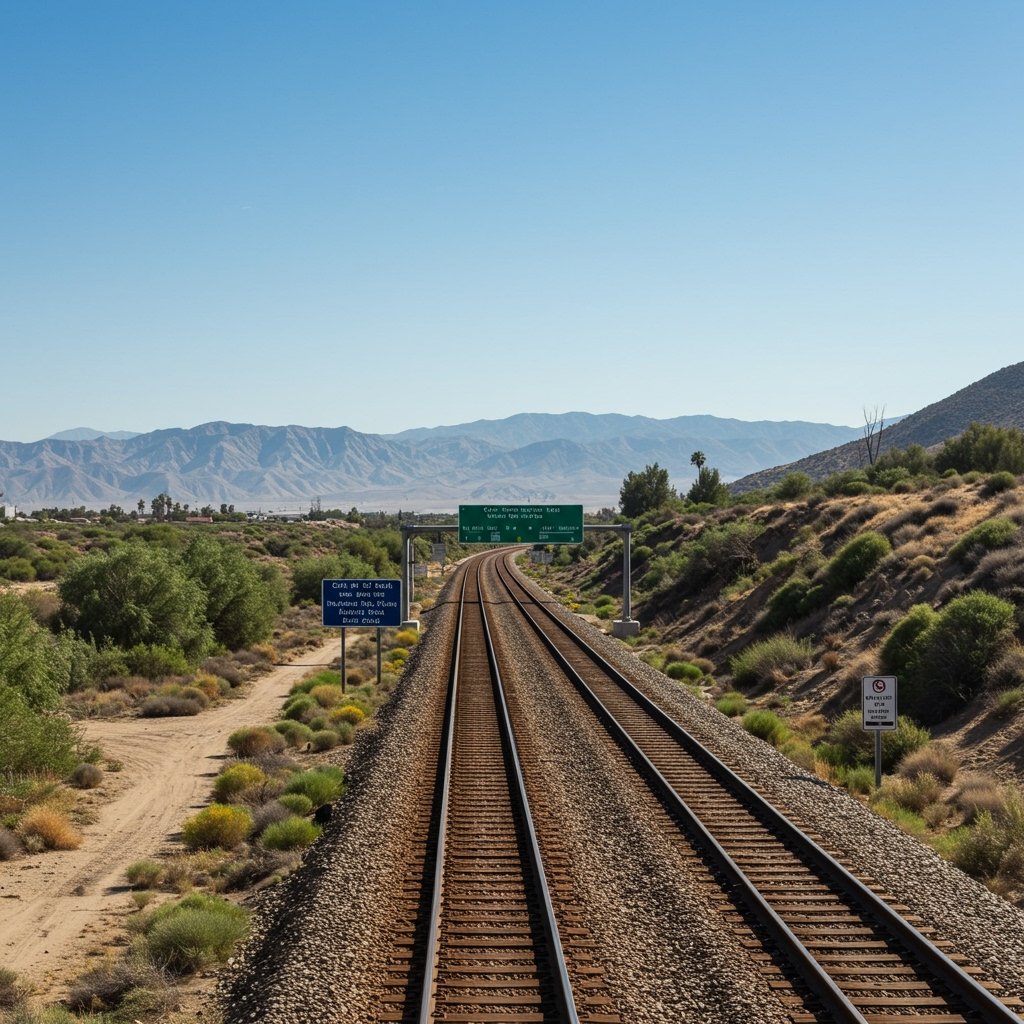California High-Speed Rail Secures Pivotal $5 Billion Funding for Key Central Valley Segment
SACRAMENTO, CA — Governor Gavin Newsom marked a significant milestone for the California High-Speed Rail project on Friday, March 29, 2025, by signing Assembly Bill 123. This legislative action allocates a crucial $5 billion in dedicated state funding, specifically earmarked for accelerating progress on a vital portion of the ambitious infrastructure endeavor. The funding is precisely directed towards the next construction phase, focusing intently on the approximately 40-mile segment that will bridge the gap between Bakersfield and Palmdale within the Central Valley.
The appropriation from Assembly Bill 123 is poised to inject significant momentum into the project, which has faced numerous challenges and delays over its history. Officials associated with the California High-Speed Rail Authority have confirmed that this substantial financial commitment will enable the project to proceed with issuing major construction contracts for the Bakersfield-Palmdale section. Plans are already in motion to award these critical contracts by late 2025. The infusion of funds and the subsequent contract awards are integral to meeting an ambitious timeline that targets segment completion by 2030.
The signing ceremony, a formal event held in Sacramento, underscored the state’s renewed commitment to bringing the high-speed rail vision closer to reality. Governor Newsom was joined by a contingent of key legislative leaders who were instrumental in championing and shepherding Assembly Bill 123 through the state legislature. Their presence and vocal support highlighted the bipartisan effort behind securing this funding and the shared belief in the transformative potential of a statewide high-speed rail network.
Supporters of the bill and the project emphasize the multifaceted benefits anticipated from this investment. Among the most frequently cited impacts are the substantial opportunities for job creation. The construction of a large-scale infrastructure project like high-speed rail necessitates a skilled workforce, promising thousands of direct and indirect jobs across various sectors, particularly within the Central Valley region where unemployment rates can be higher than the state average. These jobs range from engineering and construction trades to project management and logistical support.
Beyond economic stimulus through employment, the project is also heralded for its potential environmental advantages. A fully operational high-speed rail system is expected to significantly contribute to reducing carbon emissions across the state. By offering a fast, efficient, and electric-powered alternative to automobile and air travel for intercity trips, the project aims to alleviate congestion on highways and decrease the carbon footprint associated with transportation, a major source of greenhouse gas emissions in California.
The 40-mile segment connecting Bakersfield and Palmdale is strategically critical to the overall network. While initial construction has focused on a foundational segment within the Central Valley, connecting Bakersfield to a point north, the link to Palmdale is essential for eventually connecting the Central Valley line to the Southern California metropolis, including Los Angeles. This segment involves complex engineering challenges, including significant tunneling and grade separation work to traverse varied terrain. Securing dedicated funding through Assembly Bill 123 specifically for this portion signals a deliberate focus on overcoming these technical hurdles and linking two key population centers, thereby making the eventual connection to larger urban areas more viable.
The $5 billion allocated by Assembly Bill 123 is a substantial, yet partial, investment in the grand scale of the projected statewide high-speed rail cost, which is estimated to be in the tens of billions. However, its specific allocation to the Bakersfield-Palmdale segment represents a focused effort to complete a critical piece of the puzzle, building upon previous state and federal appropriations. This funding demonstrates the state’s resolve to see demonstrable progress on the ground, particularly in the Central Valley, which is positioned to be the operational heart of the initial phase of the system.
For a project that has faced intense scrutiny over escalating costs, revised timelines, and political opposition, the signing of Assembly Bill 123 and the allocation of $5 billion is a powerful statement of renewed commitment from state leadership. It suggests a determination to push past past obstacles and complete the foundational segments necessary to bring the system into operational existence. The focus on the Bakersfield-Palmdale link aligns with the strategy of completing usable segments as funding becomes available, rather than attempting to fund the entire statewide network simultaneously.
The legislative leaders present at the Sacramento signing ceremony voiced their support for the bill’s potential to unlock economic opportunities and advance the state’s climate goals. They underscored the importance of investing in modern infrastructure that can serve California’s growing population and dynamic economy for generations to come. The passage of Assembly Bill 123 underscores the legislative body’s agreement with the executive branch on the strategic importance of continuing investment in the high-speed rail project, despite ongoing debates about its scope and cost.
Project officials remain optimistic that the $5 billion from Assembly Bill 123, combined with other funding sources, provides the necessary resources to maintain the targeted timeline for the Bakersfield-Palmdale section. Achieving segment completion by 2030 would be a tangible demonstration of progress, providing a foundation upon which the rest of the statewide network can eventually be built. The state’s investment through Assembly Bill 123 is more than just financial; it represents a crucial step in restoring confidence and demonstrating tangible advancement on one of California’s most ambitious infrastructure projects, signaling a clear path forward for construction on the vital Bakersfield-Palmdale link within the Central Valley.



















